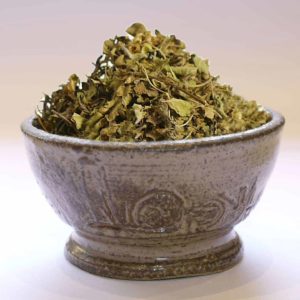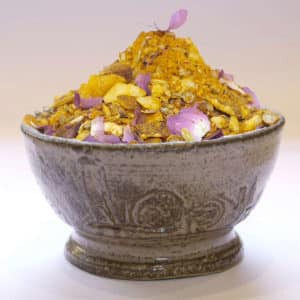0
- ONLINE GROCERY
- OUR HISTORY
- BLOG
- CONTACT
- MY ACCOUNT
- PRO
11,90 €7,200,00 € /kg
Le safran Bio du Maroc venant de Taliouine est très certainement un des meilleurs safran au monde. La récolte 2020 vient d’arriver – pur premium catégorie 1 – ISO 3632. Pour des quantités de safran supérieure à 50g merci de nous contacter, quantités limitées. Récolte 2023.
Pour cette année 2025, attention le safran bio de Taliouine est remplacée par un magnifique super Negin Bio de la frontière irano-afghane.

Organic saffron from the High Atlas, and more specifically from the Taliouine region of Morocco, is undoubtedly the best saffron in the world. 90% of the world's saffron is produced in Iran, but Morocco's saffron still stands out from the rest in terms of crocin (the color), picrocrocin and safranal (organic compounds in saffron that are responsible for saffron's specific taste).
The Swiss are not mistaken: an article in Le Nouvelliste declares it to be one of the best saffrons in the world. The Italian Slowfood foundation has tested Taliouine saffron, and the results are quite conclusive: its safranal concentration is very high, and its phenyl-ethanol content gives it a light, sweet floral touch.
Taliouine saffron is the only organic saffron on the African continent of superior quality, with 50% more coloring power than Iranian saffron. Dark, brick-red in color, Morocco's red gold lives up to its name.
Water content: 8.3%.
Picrocrocine (flavor): 95 (absorbance at 257nm)
Safranal (aroma): 40 (absorbance at 330nm)
Crocin (color): 243 (absorbance at 440nm)
From the Latin safranum, zarparan in Persia or Sahafaran in Hebrew, traces of crocus sativus - saffron - can be found on tablets in Iraq dating back to 2000 BC. Present on certain Santorini frescoes, it was discovered 200 years ago in the Roman Empire. Greece is undoubtedly the cradle of the famous Crocus Sativus (the Greek endemic Crocus cartwrightianus being its presumed ancestor).
Cultivated in Spain as early as the 9th century, saffron began to be exported to Syria and Egypt in the 11th century, to France in the 12th century, and throughout Europe in the 13th century. It was not until the 14th century that saffron was widely consumed by the nobility and clergy.
Saffron was first cultivated in Iran and the Maghreb in the 8th century, then nine centuries later in Japan, and 1000 years later in Pennsylvania, where the first traces of cultivation can be found in the United States. One of the last places where saffron was grown was Argentina, which is now a major producer. In France, saffron-growing began in the 14th century in the south-west, but it is also found in Provence and, more surprisingly, in Poitou and Normandy.
Spices, and saffron in particular, are made up of three major components: flavor, color and aroma, or organoleptic architecture. If we want to shorten the explanation, chemically saffron is composed of picrocrocine (flavor), α-crocine (color) and safranal (aroma). In addition to these three components, the notion of terroir is very important, and saffron is very similar to wine in this respect. But it would be too simple to summarize saffron in these four main components, for saffron is odor, color, flavor, texture, strength, taste and appearance.
The color of saffron:
it's this component that immediately identifies a saffron's premium quality. From deep garnet to carmine red, but also with shades of pink and orange. Very dark, saturated, almost black reds make up the color of saffron, which, as if by magic, once in water, turns an intense yellow, a golden yellow.
Saffron appearance:
In powder, filaments or bunches of filaments (the three filaments that form the stigmas), but always very homogeneous. Saffron powder should be avoided, because unfortunately it's rare to know what you're buying... and preservation is not optimal. A 100% stigma saffron is a symbol of high quality, premium saffron.
Saffron texture:
ISO 3632 requires saffron to have a moisture content of less than 12% (I recommend saffron with a moisture content of less than 10 or even 9%). Saffron is therefore brittle at the fingertips, so rehydrating it should not deform it.
The flavour and strength of saffron:
When young, saffron is often very bitter, slightly sweet. A measured bitterness is a sign of mature saffron, but this depends a great deal on the terroir.
The smell of saffron:
Saffron has a very sweet flowery or honey-like scent, often with the aroma of red fruits (there are many notes comparable to Kampot red pepper). Resin and caramel scents, as well as roasted nuts such as almonds or hazelnuts, are often present. Its scent is highly distinctive, and leaves no one unmoved. Anyone who has smelled a jar of saffron will never forget it.
The flavour of saffron:
Flavor is that sensation that occurs in the back of the mouth between the nose and the throat, and saffron is rich in it. Humus, red fruits, aromatics, musk, mushrooms - such aromatic complexity is very rare in spices, and only a few spice blends can provoke sensations that are neither odors nor flavors.
| Weight | 1 g |
|---|---|
| Continent-Country | Africa |
| Color | Brown-red |
| Botanical nomenclature | Crocus Sativus |
| Weight | 10g en boite, 1g pot en verre, 2g pot en verre, 25g en boite, 5g en boite, 50 g en boite |



